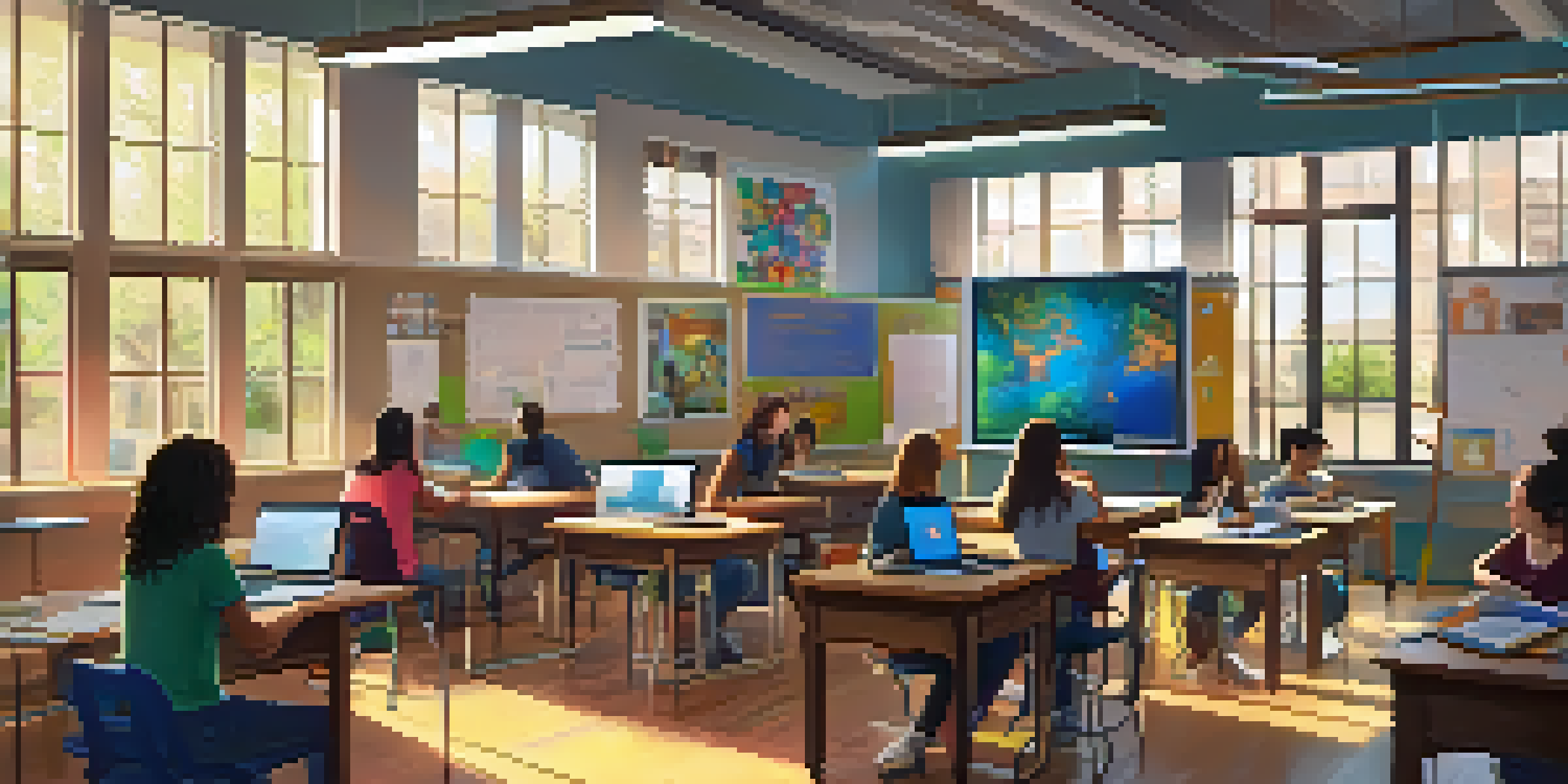The Role of Digital Storytelling in Constructivist Learning

Understanding Constructivist Learning Principles
Constructivist learning is based on the idea that learners build their own understanding. This approach emphasizes active participation, where students engage with their environment, collaborate with peers, and reflect on their experiences. Think of it like building a sandcastle; each grain of sand represents knowledge that students accumulate and shape over time.
Learning is a treasure that will follow its owner everywhere.
In this learning model, teachers act as facilitators rather than traditional educators. They guide students to ask questions, explore concepts, and develop critical thinking skills. By encouraging inquiry and exploration, educators help learners connect new information to their existing knowledge base.
Ultimately, constructivist learning fosters a deeper understanding of concepts, as students are not just passive recipients of information. Instead, they are active participants in their educational journey, which enhances retention and application of knowledge.
What is Digital Storytelling?
Digital storytelling is the art of using digital tools to tell stories, combining traditional narrative with multimedia elements. This can include text, images, audio, and video to create a rich, engaging experience for the audience. Imagine reading a book while also watching a movie that brings the story to life; that's the essence of digital storytelling.

In education, digital storytelling allows students to express their understanding creatively. They can create their own narratives, incorporating different media that resonate with their personal learning styles. This process not only makes learning more enjoyable but also helps students develop digital literacy skills.
Constructivism Empowers Learning
Constructivist learning principles encourage active participation, allowing students to build their own understanding through exploration and collaboration.
Moreover, digital storytelling encourages collaboration among students, as they often work in groups to create their projects. This teamwork fosters communication skills and promotes a sense of community, making learning a shared experience rather than a solitary one.
The Connection Between Digital Storytelling and Constructivism
Digital storytelling aligns perfectly with constructivist principles by allowing learners to construct knowledge through personal expression. When students create their own stories, they actively engage with the content, interpreting and reinterpreting information in a way that makes sense to them. This personal connection enhances their understanding.
Tell me and I forget, teach me and I remember, involve me and I learn.
Additionally, digital storytelling supports collaborative learning, another key element of constructivism. Students often work together to brainstorm ideas, gather materials, and create their stories, leading to shared learning experiences. This collaboration not only enriches their projects but also helps them learn from one another.
Furthermore, the feedback cycle in digital storytelling encourages reflection, a critical component of constructivist learning. As students present their stories and receive input from peers and educators, they can refine their understanding and improve their skills, fostering a deeper learning experience.
Engaging Learners Through Multimedia Elements
One of the strengths of digital storytelling is its use of multimedia to engage learners. Visuals, audio, and interactivity can capture students' attention far more effectively than traditional methods. For instance, a video clip can illustrate a concept in a dynamic way, making the learning experience more memorable.
By integrating various media, digital storytelling caters to different learning styles. Visual learners benefit from images and videos, while auditory learners can engage with spoken narratives or sound effects. This inclusivity ensures that all students can connect with the material in a way that resonates with them.
Digital Storytelling Enhances Engagement
By integrating multimedia elements, digital storytelling captivates learners and accommodates various learning styles, making education more enjoyable.
Moreover, the emotional impact of storytelling can enhance motivation. When students see their work come to life through multimedia, they are more likely to feel invested in their learning process. This emotional engagement can lead to increased enthusiasm and a willingness to explore deeper.
Fostering Critical Thinking and Creativity
Digital storytelling encourages critical thinking as students must analyze and synthesize information to create their narratives. They learn to evaluate sources, select relevant content, and determine the best way to convey their messages. This process mirrors real-world problem-solving, preparing students for future challenges.
Creativity is also a key component of digital storytelling. As students craft their stories, they must think outside the box and explore innovative ways to express their ideas. This creative freedom not only makes learning enjoyable but also helps students develop skills that are essential in today's rapidly changing world.
By fostering both critical thinking and creativity, digital storytelling empowers students to become more independent learners. They gain confidence in their abilities to express themselves and tackle complex concepts, which can lead to lifelong learning habits.
Assessing Learning Through Digital Storytelling
Assessment in constructivist learning environments can be challenging, but digital storytelling provides a unique avenue for evaluation. Instead of traditional tests, educators can assess students' understanding through their storytelling projects. This approach allows for a more holistic view of a learner's capabilities.
Rubrics can be developed to evaluate various aspects of the digital stories, such as content accuracy, creativity, and presentation skills. This detailed feedback helps students understand their strengths and areas for improvement, fostering a growth mindset.
Collaboration Fosters Deeper Understanding
Digital storytelling promotes teamwork and reflection, enabling students to learn from one another and refine their understanding through shared experiences.
Additionally, showcasing student work through digital storytelling can build a sense of accomplishment. When learners share their stories with peers or a larger audience, they gain recognition for their efforts, which can further motivate them in their educational journey.
Challenges and Considerations in Implementation
Despite its many benefits, implementing digital storytelling in a constructivist framework does come with challenges. Access to technology and digital tools can vary significantly among students, which may limit some learners' opportunities to participate fully. Educators must strive to create equitable access to resources.
Another consideration is the time required for both students and educators to become proficient with digital storytelling tools. Training and practice are essential, but they can take valuable time away from other learning activities. Finding the right balance is crucial for successful implementation.

Lastly, educators should remain mindful of the diverse skill levels within their classrooms. Providing support and scaffolding for students who may struggle with technology or storytelling can ensure that all learners benefit from this powerful educational approach.